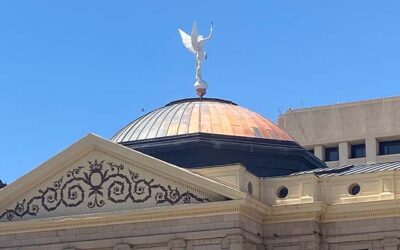By Terri Jo Neff |
One week after his inauguration, President Joe Biden issued Executive Order 14008 pausing new oil and gas leases on public lands. But perhaps the best known provision of the executive order was the goal of ensuring at least 30 percent of all federal land and coastal waterways are conserved by 2030.
The purpose, according to Biden, is to address climate change, protect biodiversity, and create equitable access to nature.
At the time of Biden’s announcement, about 12 percent of land across America was under sufficient oversight to be considered conserved, according to data from the U.S. Geological Survey. To meet the 30 percent goal would require conservation of about 440,000,000 additional acres.
By comparison, the State of Texas comes in at 171,057,000 acres.
The fact that the federal government already controls roughly 640,000,000 acres would seem to go a long way toward achieving the 30 by 30 goal, now better known as the America the Beautiful Initiative. However, nearly one-third of those acres are not conserved in a way that would likely comply with the unfinalized standards of the initiative.
Back in March, more than 60 members of the Congressional Western Caucus, sent Biden a letter expressing concerns with 30 by 30. The letter noted that with more than 90 percent of federally-managed lands lying west of the Mississippi, their constituents are concerned Western states will be disproportionately impacted by policies utilized to achieve the 30 by 30 goals.
“Stewardship of our lands is embedded in our Western values. Sustainable, healthy land is the lifeblood of our rural communities and our outdoor heritage and rural economies thrive when our lands are properly managed,” the letter stated. “However, the 30 by 30 initiative displays a dangerous thoughtlessness and far too many of our questions have been left unanswered.”
Yet seven months after that letter, very little is known as to how the Biden Administration intends to meet those goals. And that prompted an Oct. 12 letter to the President from Cochise County Sheriff Mark Dannels on behalf of the Arizona Sheriffs Association.
“As in the past, we have concerns including proposals such as these lacking specific measures, imposing unnecessary land use restrictions, and limiting economic opportunities that have existed for decades on these very lands,” Dannels wrote, also noting that federal officials were using the term “federally managed lands” instead of “public lands” in 30 x 30 documents.
But while Arizona’s sheriffs encouraged collaboration with state agencies and local governments to address climate change and drought impacts within the Western States, the letter cautioned that federal officials “should avoid imposing unilateral authority to further limit uses and impose increased land use restrictions on federal lands in the West that have been extremely divisive and controversial.”
Similar letters were sent to Sen. Kyrsten Sinema and Sen. Mark Kelly. A spokeswoman for the Arizona Sheriffs Association said no responses were received in the last month.
Some 30 by 30 documents mention the need for incentivizing voluntary stewardship efforts on private lands and by supporting the efforts and visions of States and Tribal Nations. The fact that privately owned lands are home to nearly two-third of all species on the U.S. Endangered Species list also has landowners in the western United States concerned about preservation of property rights.
“Traditional mechanisms of land protection like permanent acquisition, easement or federal designation will rightfully play a role in achieving 30 by 30,” the Western Landowners Alliance noted in a recent statement. “At the same time, over-reliance on these tools, or an insistence that these mechanisms are the only way to protect land fails to recognize the contributions to conservation of those already on the land.”
Deb Haaland, as U.S. Secretary of Interior, was tasked to coordinate with the Secretarys of Agriculture and Commerce along with the National Oceanic and Atmospheric Administration and White House Council on Environmental Quality to propose guidelines for determining what lands and waters qualify for conservation.
The America the Beautiful Interagency Working Group, as it is known, is also responsible for providing an annual progress report to the White House as well as ensuring federal dollars get distributed toward conservation programs.
The working group came under scrutiny earlier this year after questions were raised about the protocols utilized for awarding $17 million in federally funded grants for urban park projects. One of those projects sent $1 million to the City of Santa Barbara, California to renovate a park, including the installation of synthetic turf at the park.








